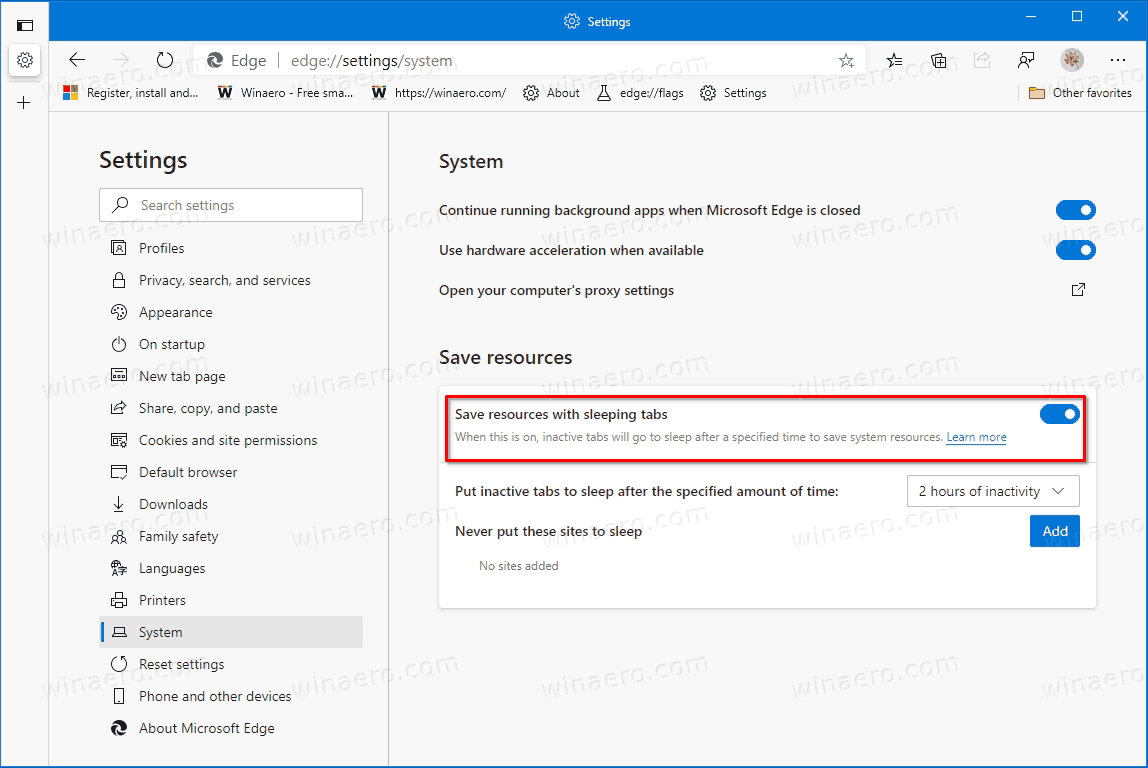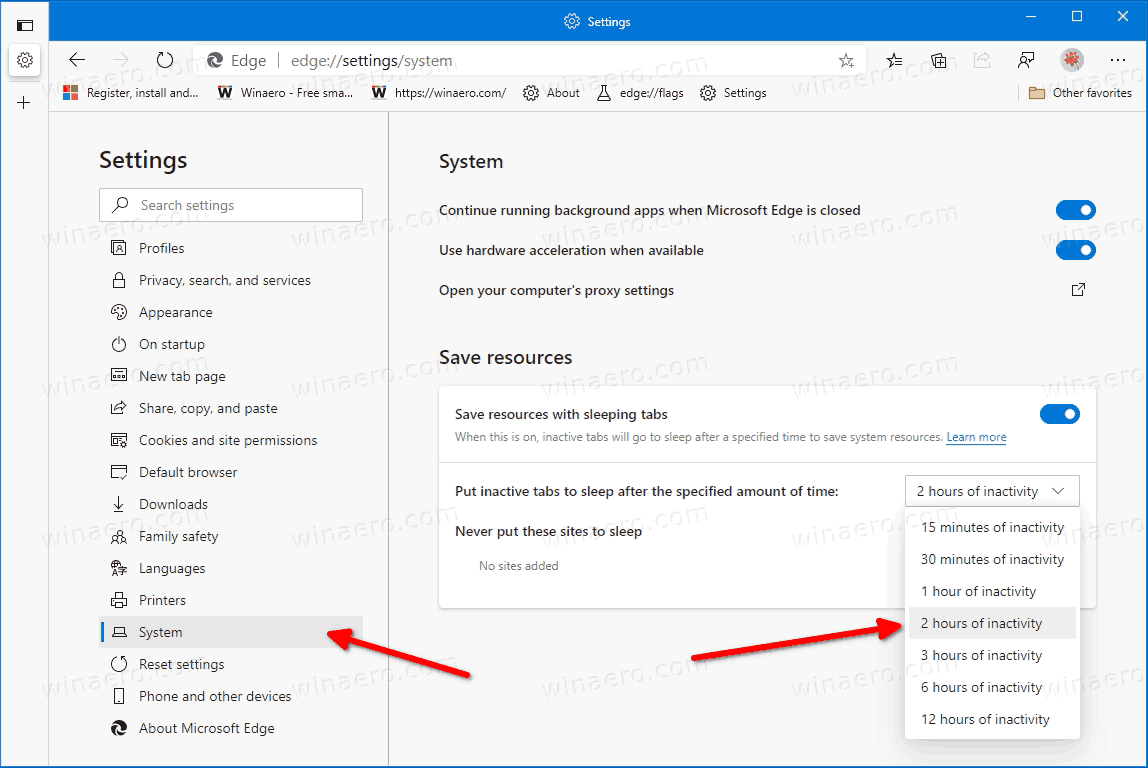Here is how you can change Sleeping Tabs Timeout in Microsoft Edge. To improve memory and CPU utilization of the browser, Microsoft has added a new "sleeping tabs" feature to the Edge browser. It extends device's battery life and reduces its power consumption by putting background tabs into the idle state.
Advertisеment
Similar features already exist in a number of modern browsers. You must have heard about tab hibernation in Vivaldi. Chrome and Firefox offer something similar. Microsoft Edge now offers the similar option. Called "Sleeping Tabs", it can be enabled or disabled on demand. See Enable or Disable Sleeping Tabs in Microsoft Edge.
Microsoft used Chromium's tab freezing technology to create sleeping tabs. This feature allows inactive background tabs to “go to sleep,” releasing system resources after a set amount of time. These resources include both memory and CPU and can be used for new or existing tabs or other applications running on your device.
By default, tabs are set to go to sleep after two hours of inactivity. If two hours isn’t right for you, you can choose a different time interval.
This post will show you how to change the Sleeping Tabs timeout in the Edge browser. We will review two methods of doing that.
How to Change Sleeping Tabs Timeout in Microsoft Edge
- Open Microsoft Edge.
- Click on the Settings button (Alt + F) and select Settings from the menu.

- On the left, click on System.
- On the right side, ensure that the option Save resources with Sleeping tabs is enabled.

- Change the Put inactive tabs to sleep after the specified amount of time: value using the drop- down menu.

You are done.
Besides the above, Microsoft Edge allows specifying the default Sleeping Tab timeout for all users. There is a Group Policy for that. Let's review how to configure it.
Change Sleeping Tabs Timeout for All Users
- Open the Registry Editor app.
- Go to the following Registry key.
HKEY_LOCAL_MACHINE\SOFTWARE\Policies\Microsoft\Edge.See how to go to a Registry key with one click. Create the Edge subkey manually if it is missing in the Registry. - On the right, modify or create a new 32-Bit DWORD value SleepingTabsTimeout. Note: Even if you are running 64-bit Windows you must still create a 32-bit DWORD value.

- Set its value to the number of seconds in Decimal for the Sleeping Tabs timeout. See the reference table below for corresponding values.
- If Edge is currently running, then close and reopen the browser to apply the change.
The default values timeout values are as follows.
| Registry Value data | Timeout Value |
|---|---|
| 300 | 5 minutes of inactivity |
| 900 | 15 minutes of inactivity |
| 1800 | 30 minutes of inactivity |
| 3600 | 1 hour of inactivity |
| 7200 | 2 hours of inactivity (default) |
| 10800 | 3 hours of inactivity |
| 21600 | 6 hours of inactivity |
| 43200 | 12 hours of inactivity |
You are done.
To undo the change, all you need to do is to remove the SleepingTabsTimeout 32-bit DWORD value from the Registry.
That's it!
Support us
Winaero greatly relies on your support. You can help the site keep bringing you interesting and useful content and software by using these options:
